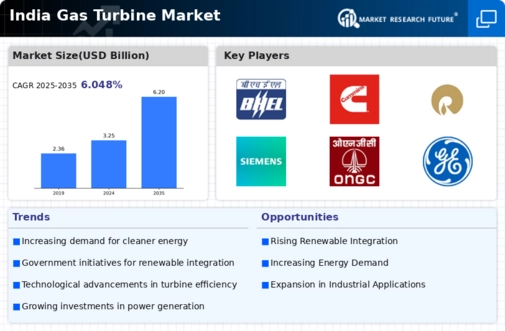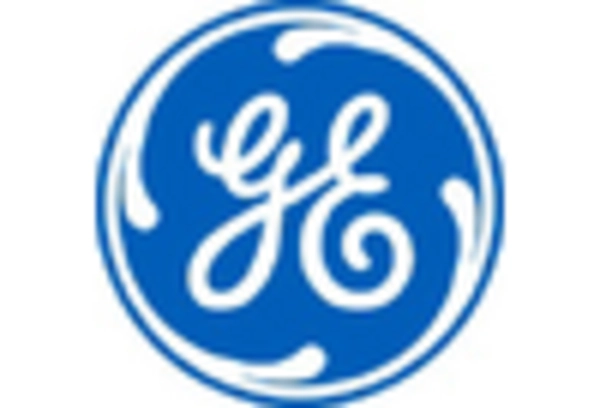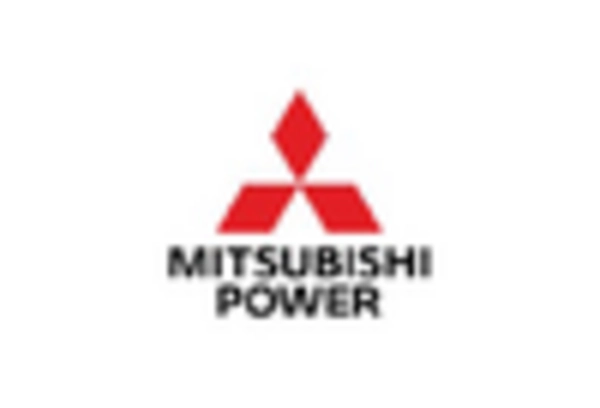Rising Energy Demand
The gas turbine market in India is experiencing a notable surge in demand due to increasing energy requirements. As India's economy continues to grow, the need for reliable and efficient power generation becomes paramount. The government has set ambitious targets to enhance electricity generation capacity, aiming for 450 GW by 2030. This growth trajectory indicates a potential increase in the gas turbine market, as these systems are favored for their efficiency and lower emissions compared to coal. Furthermore, the shift towards cleaner energy sources aligns with global trends, suggesting that the gas turbine market will play a crucial role in meeting India's energy needs.
Environmental Regulations
The gas turbine market in India is significantly influenced by stringent environmental regulations aimed at reducing carbon emissions. The government has implemented various policies to promote cleaner energy sources, which has led to a shift from coal-based power generation to gas turbines. These regulations are expected to tighten further, compelling power producers to adopt technologies that comply with emission standards. As a result, the gas turbine market is likely to expand, driven by the need for cleaner alternatives. The market could see a growth rate of approximately 8% annually as industries adapt to these regulations, which will enhance the demand for gas turbines.
Technological Innovations
Technological innovations are reshaping the gas turbine market in India, leading to improved efficiency and performance. Advances in turbine design, materials, and control systems are enabling manufacturers to produce more efficient gas turbines that consume less fuel and emit fewer pollutants. The introduction of combined cycle gas turbine (CCGT) technology is particularly noteworthy, as it enhances overall efficiency by utilizing waste heat for additional power generation. This trend suggests that the gas turbine market will continue to evolve, with manufacturers investing in R&D to stay competitive. The potential for increased efficiency could drive market growth by approximately 10% over the next few years.
Investment in Infrastructure
Investment in infrastructure development is a critical driver for the gas turbine market in India. The government has allocated substantial funds for the enhancement of power generation facilities, including gas-based power plants. This investment is part of a broader strategy to modernize the energy sector and ensure a stable supply of electricity. With an estimated $20 billion earmarked for energy infrastructure projects over the next five years, the gas turbine market stands to benefit significantly. The focus on building new gas plants and upgrading existing ones indicates a robust growth potential for the gas turbine market, as these systems are integral to achieving energy security.
Shift Towards Renewable Energy Integration
The integration of renewable energy sources into the power grid is positively impacting the gas turbine market in India. As the country aims to achieve 175 GW of renewable energy capacity by 2022, gas turbines are increasingly seen as a complementary technology. They provide the necessary flexibility to balance the intermittent nature of renewables like solar and wind. This synergy is likely to enhance the attractiveness of gas turbines, as they can quickly ramp up or down in response to fluctuations in renewable generation. Consequently, the gas turbine market may experience a growth spurt, with projections indicating a potential increase of 12% in demand as the energy landscape evolves.

















Leave a Comment